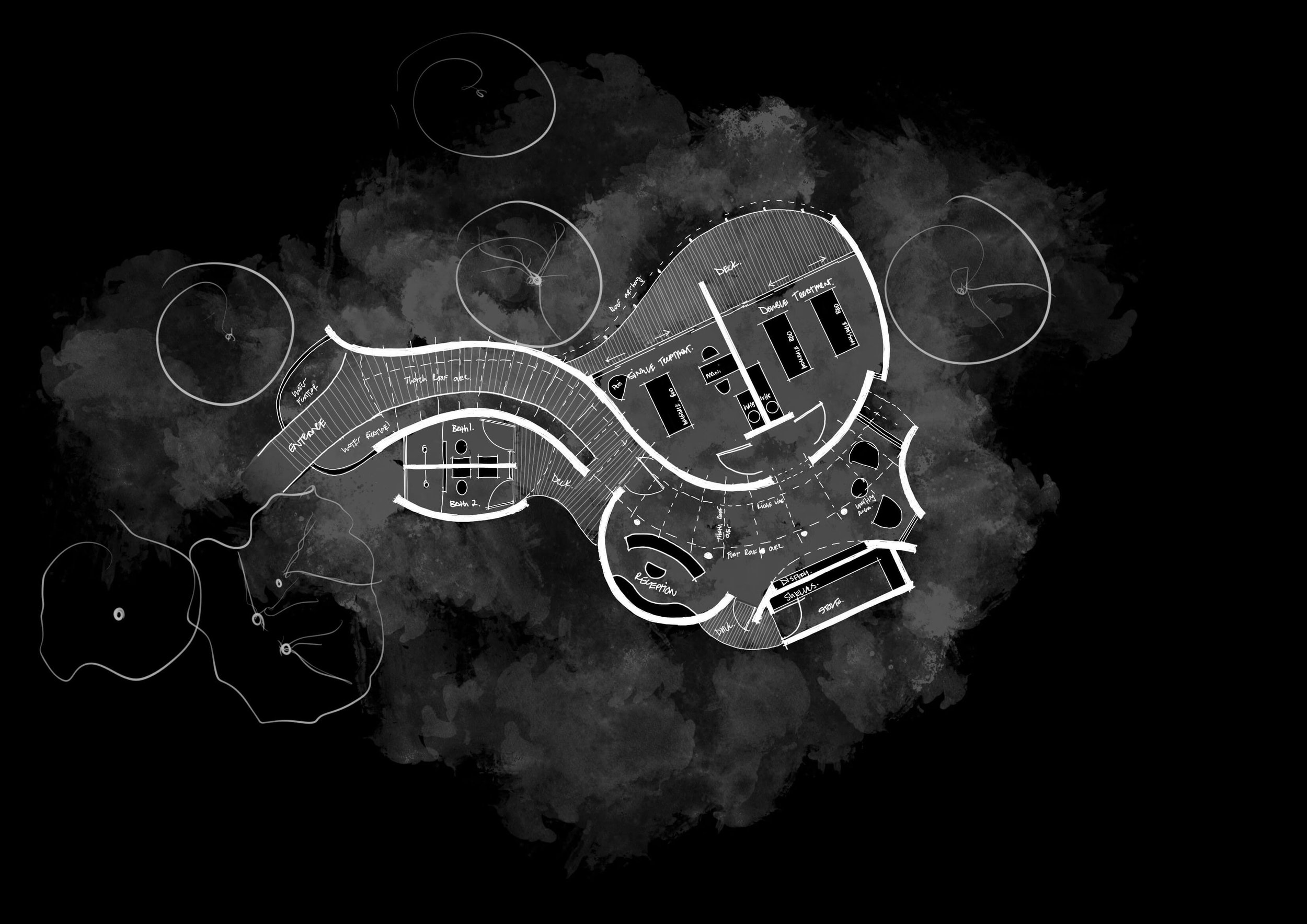
Black Sable Blog
EIA for Your Safari Lodge
An EIA is a process that helps assess the potential environmental, social, and economic impacts of proposed projects or activities before they are approved or carried out. The goal is to ensure that potential negative impacts are identified and addressed, and that decision-makers have the necessary information to make informed choices.
Here's a breakdown of how the process of determining if an EIA is needed usually works:
Initial Project Description: The process starts with providing a basic description of the proposed project or activity. This description should outline what the project entails, its location, and its scale.
Desktop Assessment: Based on the initial project description, environmental professionals, often referred to as Environmental Assessment Practitioners (EAPs), perform a desktop assessment. This assessment involves reviewing the project's description against relevant environmental regulations and guidelines. The assessment focuses on determining whether the proposed project triggers any criteria that would necessitate an EIA. These criteria are often outlined in environmental laws and regulations specific to the jurisdiction in which the project is located.
Listed Activities: The assessment includes checking whether the proposed project falls under any categories or activities that are listed as requiring an EIA in the applicable regulations. These listed activities are typically those with a higher potential for significant environmental impact.
Environmental Factors: The assessment also considers various environmental factors that might be affected by the project. These factors can include proximity to water bodies, protected areas, critical habitats, threatened or endangered species, air quality, noise levels, and more.
Thresholds and Triggers: The regulations typically include specific thresholds or triggers that help determine whether an EIA is required. These thresholds could be related to the project's size, location, potential impact, or other relevant factors.
Assessment Outcome: Based on the desktop assessment, the EAP determines whether the proposed project requires an EIA. If the assessment suggests that the project has the potential to cause significant environmental impacts, it will likely trigger the requirement for a more comprehensive assessment through an EIA.
It's important to note that the exact process and criteria for requiring an EIA can vary between different jurisdictions and countries. Additionally, regulations and guidelines may change over time, so it's essential to refer to the most up-to-date sources and consult with relevant authorities or experts when making these determinations.
In summary, the process of determining whether an EIA is needed involves evaluating the project's description, its potential environmental impacts, and its alignment with established criteria and thresholds set out in relevant regulations and guidelines.
Written by Bryony van Niekerk, Peter Nyeko Mashaba and Jacobus Uys
Environmental Authorisation
In the realm of hospitality and tourism, the establishment of a safari lodge represents a harmonious blend of human comfort and nature's magnificence. However, the very act of construction and operation, while aiming to provide memorable experiences, can inadvertently impact the delicate balance of local ecosystems. In this context,it is imperative to obtain environmental authorisation to help curb urban sprawl, unchecked development, and disregard for ecological nuances. These all can disrupt the serene habitats of wildlife and compromise the sustainability of natural resources. To address these potential challenges, thorough Environmental Impact Assessments (EIAs) are essential to guide the creation and operation of safari lodges in a manner that respects and sustains the environment. This process, vital to achieving a symbiotic relationship between progress and preservation, involves a structured evaluation process that encompasses both the protection of natural assets and the facilitation of responsible development. The following elaborates on the significant steps within this process, particularly focusing on South Africa's regulatory framework in this regard.
The primary goal of these assessments is not to impede developmental endeavors, but rather to facilitate development in a sustainable and responsible manner, thereby mitigating adverse impacts on our ecosystems and natural surroundings.
One of the major reasons we need Environmental Authorization is to help curb urban sprawl, which refers to the uncontrolled expansion of cities, illegal mining activities, and the inadequate implementation of spatial planning tools that currently pose significant risks to our natural environment. To safeguard our valuable biodiversity, water sources, and other natural assets, it has become imperative to conduct thorough environmental impact assessments.
Obtaining environmental authorization necessitates the completion of an Environmental Impact Assessment (EIA). This process involves two main categories: the Basic Assessment Report (BAR) and the Full Scoping and Environmental Impact Report (FS&EIR). Although these processes share a fundamental nature, the latter is tailored for larger-scale developments and incorporates an additional scoping report stage, allowing for a preliminary assessment of potential impacts before proceeding with the comprehensive impact assessment report.
The Basic Assessment process follows these steps:
Engaging an Independent Environmental Assessment Practitioner (EAP): A certified EAP undertakes the assessment impartially on behalf of the project applicant to ensure objectivity.
Application Submission: The initial step involves submitting an Application for Environmental Authorisation to the Competent Authority, the regulatory body overseeing these assessments.
Public Participation Process: The EAP conducts a structured Public Participation Process, affording interested and affected parties the opportunity to participate by registering and providing input. This phase usually spans a 30-day registration period, during which stakeholders can pose questions and voice concerns.
Drafting the Assessment Report: The EAP compiles a Draft Basic Assessment Report (BAR), which incorporates specialist reports and a draft Environmental Management Programme (EMPr). This comprehensive document outlines both the proposed project and its environmental implications, assessing potential impacts and offering recommendations for mitigation and management strategies.
Review by Interested and Affected Parties (I&APs): The Draft BAR is distributed to all registered I&APs, who are entitled to submit written comments within a 30-day period.
Finalizing the Report: Addressing the comments provided by registered I&APs, the EAP finalizes the report and submits the Final BAR to the Competent Authority for evaluation.
Decision: The Competent Authority makes a determination regarding the Environmental Authorisation application, either granting a positive or negative outcome based on the evaluation of the Final BAR.
Communication of Outcome: The EAP informs all registered I&APs about the Competent Authority's decision, ensuring transparency in the process.
Appeal Process: Should any Interested and Affected Party wish to contest the Competent Authority's decision, an appeal can be lodged. The process for appeals is governed by the 2014 National Appeal Regulations, published under NEMA (National Environmental Management Act).
Considering that the entire process, from inception to conclusion, typically spans 8 to 12 months, it is of utmost importance to engage in meticulous planning to preempt any potential delays.
Written by Bryony van Niekerk, Peter Mashaba and Jacobus Uys
Proximity Bias
How do you stand out in a sea of sameness? How about getting closer to someone or something! Our brains are hot-wired to find patterns, and one of those patterns is proximity to objects. The closer an element is to another, the more likely we are to associate those two elements together. This is a helpful design tool, and explains why people can't, for example, find light switches to rooms - because they are typically too far away from the entrance of a room, so we don't associate them together. Keep things close and let your beautiful pattern-matching brain find the link. Its there.
Taken from
"Proximity - Lidwell, William; Holden, Kritina; Butler, Jill. Universal Principles of Design, Revised and Updated: 125 Ways to Enhance Usability, Influence Perception, Increase Appeal, Make Better Design Decisions, and Teach through Design (p. 196). Rockport Publishers. Kindle Edition."
Attractive things work better
Attractive things work better! What? How? I was so shocked when I read this (although it does explain why Apple dominates the market). In the book "Emotional Design: Why We Love (or Hate) Everyday Things" by Don Norman, it briefly explains a study done in Japan by two Japanese scientists, Masaaki Kurosu and Kaori Kashimura. They created two identical ATM machines, except one had the buttons and screen arranged in an attractive way the other in an unattractive way. The result? The users perceived the attractive machine was easier to use. This study was picked up by an Israeli scientist, Noam Tractinsky, who felt that this was absurd, maybe it would work in a country like Japan who are aesthetically focused, but not in general. He got the layouts used by the Japanese scientists, repeated the study and found not only was he able to repeat the results, but they were stronger in Israel. Result - attractive things work better.
Design with your Eyes Closed
Close your eyes! Now design. What are you feeling, tasting, smelling, hearing? Nothing? Or worse yet, nothing sensational? You have just ignored a quarter of the world's population with your offering. Focusing on the easy sense, sight, is forgetting that the other four senses are craving attention, give it to them! Don't just think about what something looks like, go deeper! What does it feel like when I slide my hand over a feature wall, or what scents am I greeted with when I enter my room? What distinct sounds form part of the environment that make me think solely of your Safari lodge? What am I tasting? Food is an obvious target, but think further. Can you imagine what a building tastes like? The cool ferrous flavour of steel? Or the cement flavour of concrete? Materials evoke a flavour range as well! Try and cater to all the senses, reinforcing them will create a richer and layered design, it will hit so many more points of interest and leave an indelible mark on your guests memory, triggering return trips. So design with your eyes closed, create experiences a cut above. https://medium.com/who/over-2-2-billion-people-are-blind-or-visually-impaired-and-the-numbers-are-rising-heres-why-f0da6df0a191
Personality Architectural
Design not just for your physical needs, but the intangibles too. Creating a space that aligns with your personality will make you more comfortable and thus more happy. If you are sociable, reclusive, quiet, optimistic, extroverted, nature- loving and so forth, these qualities all have different requirements. Use this as your guide for understanding what your needs are and what kind of home will make you be your best. In the Safari Lodge field, think about your dream guest - what do they enjoy most, what personality make-up do they have, what keeps them up at night, what helps them sleep. The list goes on, if you can design for this individual, you will be able to add so much more richness, texture, thoughtfulness and humanity to your Safari Lodge.
Curved vs Angular Forms
Sharp and round edges. According to the book “Universal Principles of Design”, humans have a bias to objects that are contoured or round compared to objects that are sharp or have points. This is because sharp points or features activate a part of our brain associated with fear. This bias likely evolved as a way to detect threats - think thorns on a thorn tree or stings on a puffer fish. All things being equal, people prefer curved and rounded objects to sharp and angular objects. The advantage of sharp objects is that they are better at grabbing and holding our attention. Also interestingly, the sharper an object the more it activates our fear response and the less we want to utilise it, they are proportionate to each other. We can utilise these ideas in our designs and buildings. If we want to grab attention - use sharp angular forms, if we want to seem inviting and kind use rounded forms. To finish off - think about your home, does it feature any curved forms? And if its about making you feel relaxed and comfortable, why not?
